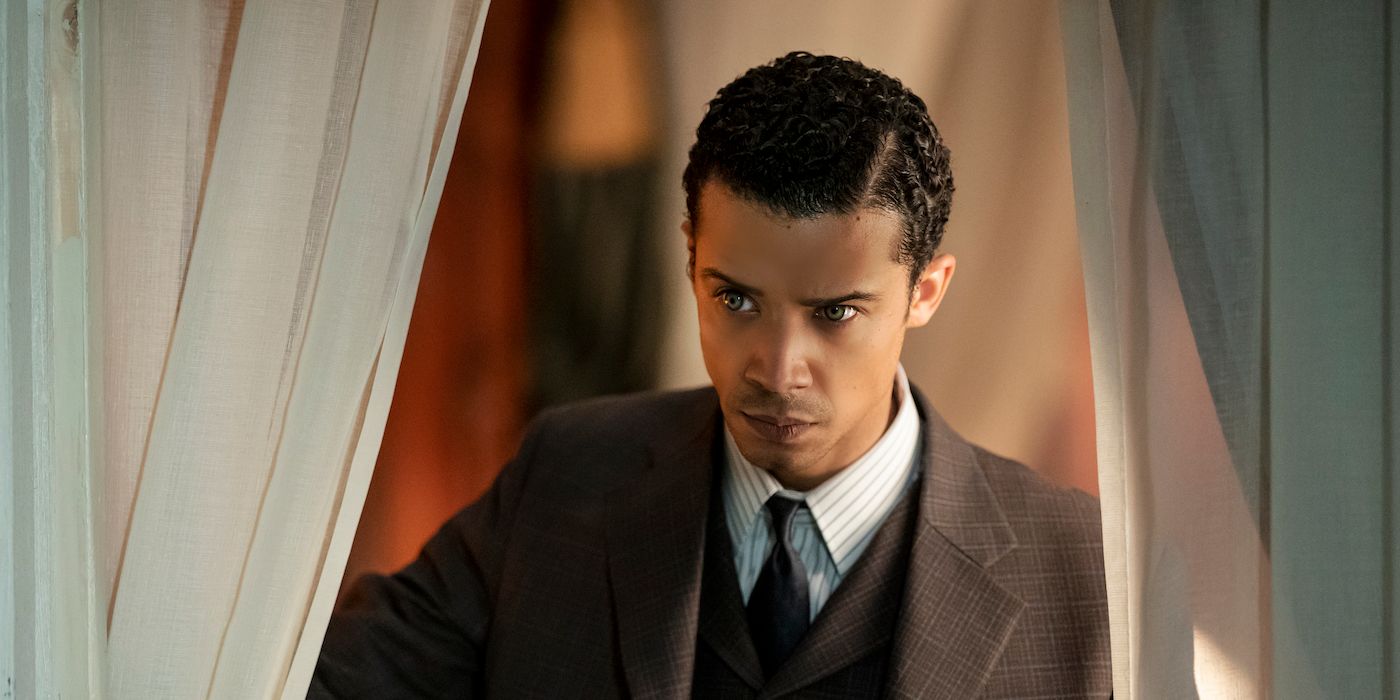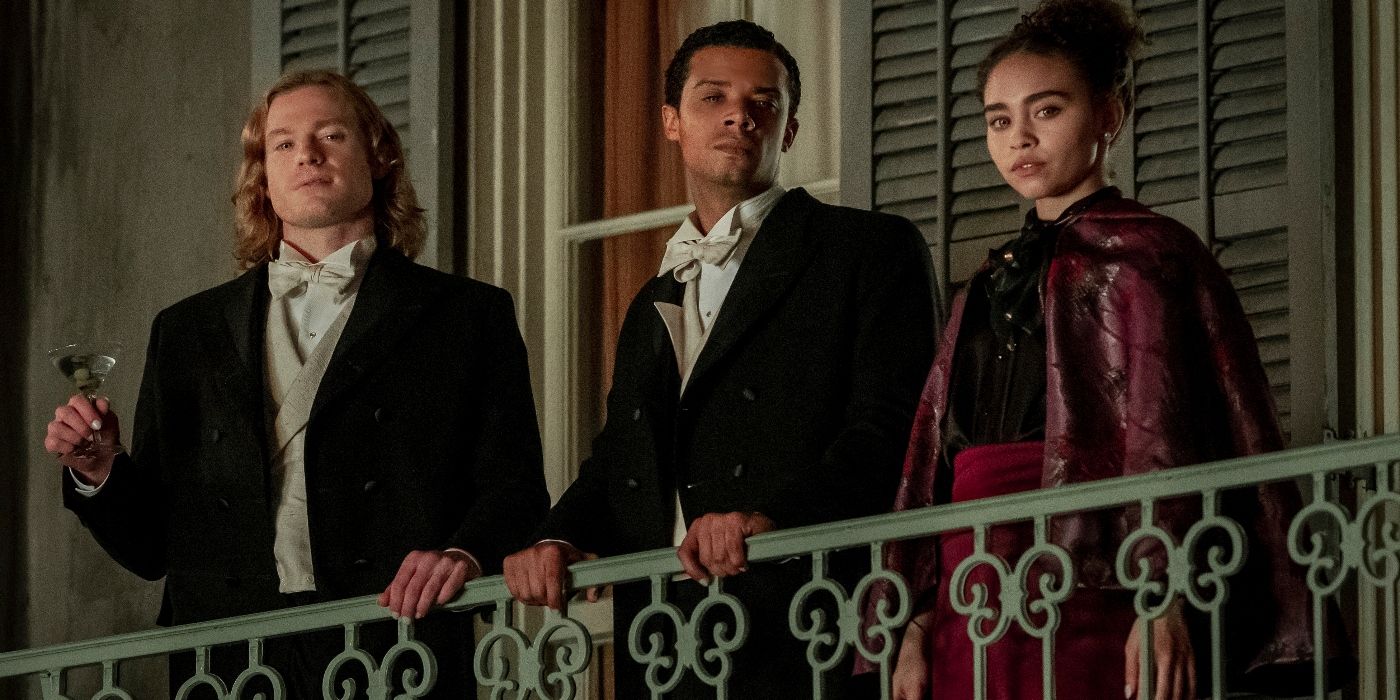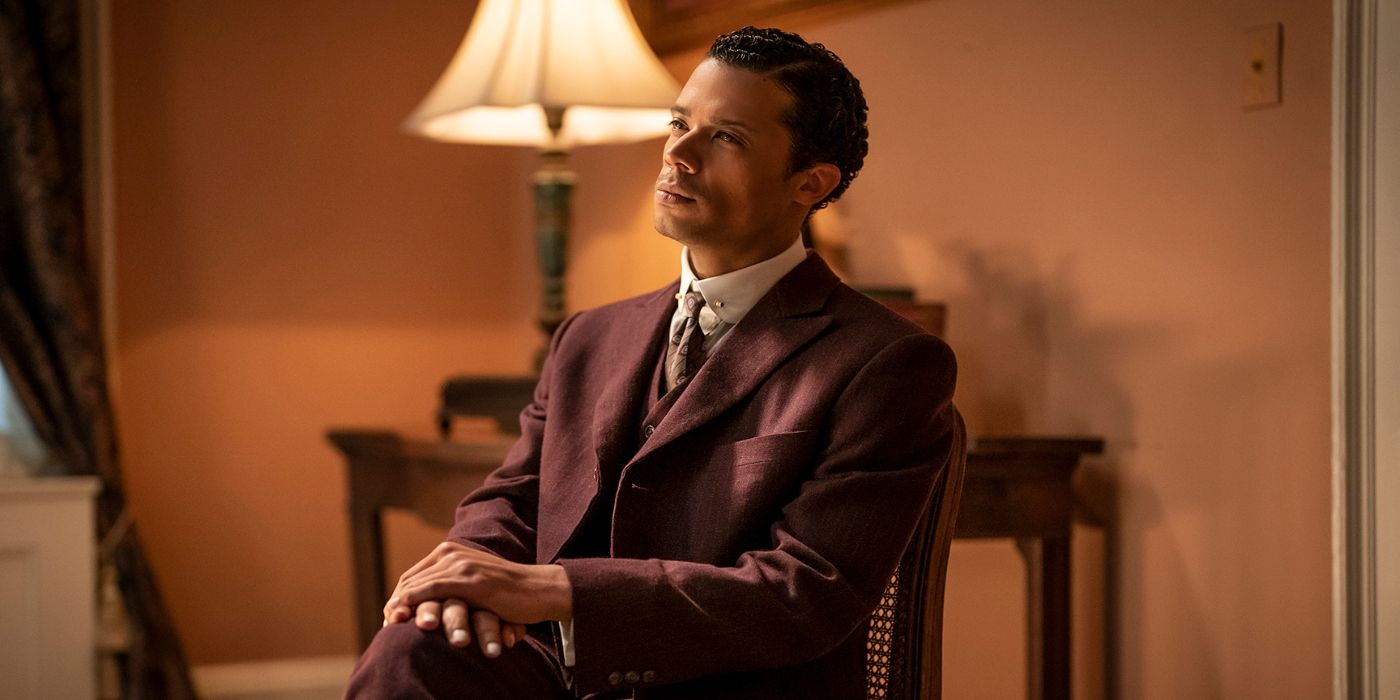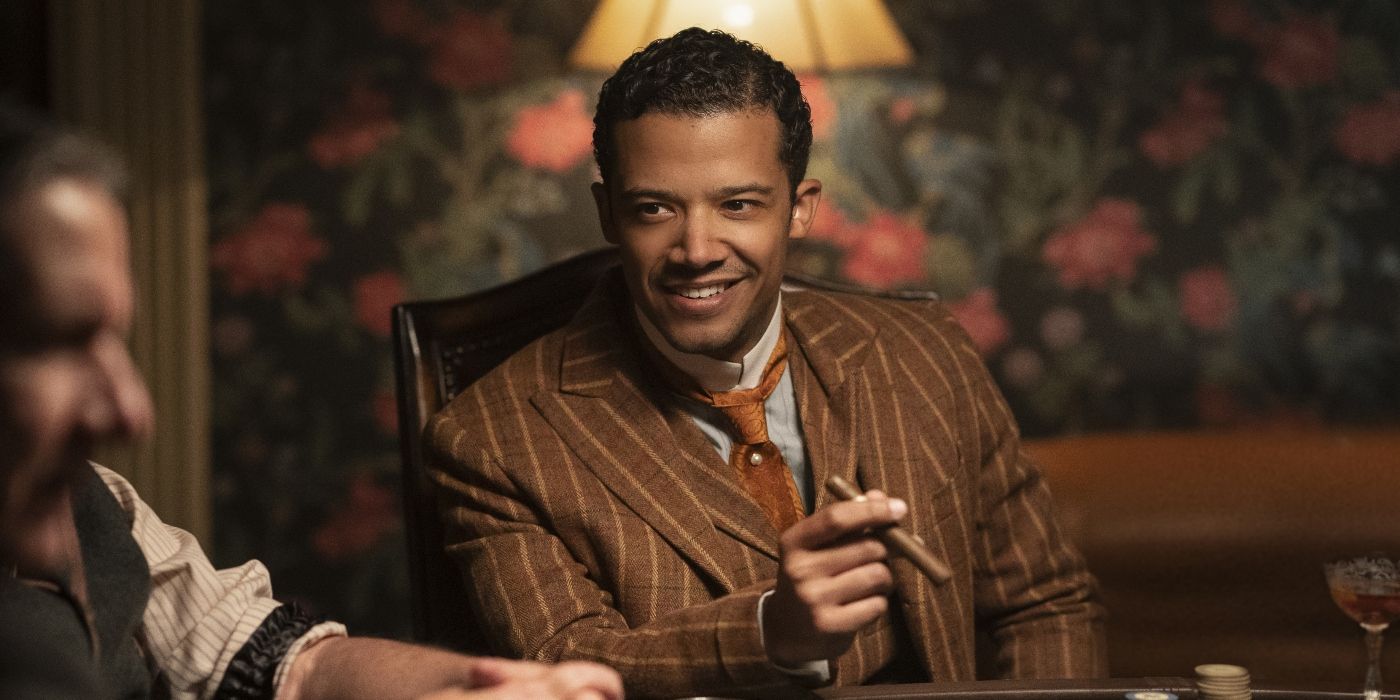Editor's note: The following contains spoilers for Episodes 1-4 of Anne Rice’s Interview With the VampireIn AMC’s adaptation of Anne Rice’s Interview With the Vampire, protagonist Louis de Pointe du Lac (Jacob Anderson) has a similar backstory to his original character, except for one significant change — he's now a Black man living in early 1900s New Orleans. This change markedly improves his character development, and in some ways softens the characterization of Lestat de Lioncourt (Sam Reid), who was initially introduced in the book series as a heartless and cruel vampire. In the books, Louis is the son of a plantation owner whose father dies. Louis has his mother and is fond of his brother, who is devoutly religious, as well as his sister. Some of these elements remain in the show as well, but because Louis is Black, life isn’t quite the same for the character.
Louis' Backstory Change Improves Upon Anne Rice's Book
In Anne Rice’s Interview with the Vampire, the death of Louis’ wealthy father means he becomes the head of the du Lac household, but unlike his book counterpart, it’s not like Louis can run the plantation — given the Jim Crow era, there was no such thing as a free man of color. To maintain his family’s standing, Louis goes into the unsavory business of running a brothel in the red-light district of Storyville, much to his mother’s (Rae Dawn Chong) disgust, of course. But it’s the one business venture Louis can enter and get customers, especially the rich and wealthy bureaucrats of New Orleans.
Louis doesn’t run this business just to be rich; he’s the only earning member of his family. His brother Paul (Stephen Norfleet) is mentally unwell, and too hung up on religion to run any business; his beloved sister Grace (Kalyne Coleman) is excited about her impending nuptials and in that era has little power, which is the same case for his mother. Louis is just trying to live his best life. By changing Louis’ race to a Black man, the story of Anne Rice’s Interview with the Vampire not only adds relevance to the modern age, but it removes the need for a slave-owner protagonist (as most plantation owners were) from the equation. In fact, the show’s writer/creator Rolin Jones has said he found it impossible to write a plantation owner’s story.
Over the course of the first four episodes of the show, the writers demonstrate the tightrope that Louis has to walk to maintain his status. He's forced to endure racialized insults because his peers don’t mean to hurl these pejoratives at him; they just mistake Louis for Black men who are not of his status. Louis remains cowed in the presence of the white men despite their backhanded compliments but ingratiates himself to them because they run the town, and he wants to expand his business. Lestat observing this blatant racism also makes him a kinder character than he is in the book. Watching Louis lower himself because of the laws of the land drives Lestat up the wall, and it’s one of the reasons why Lestat is desperate to turn Louis into a vampire — so that Louis can be everything he is "without apology." And that’s the crux of why race-bending the character works so well; telling stories about people of color, especially Black characters, who could have made strides were it not for the racist laws they had to live through.
'Interview With the Vampire' Avoids Racist Tropes
The shift in Louis’ backstory also has a greater impact on the show. The book doesn’t have as much diversity, and The Vampire Chronicles series as a whole has very few Black characters, so the show is already more inclusive than the source material with a main character who is Black. Additionally, Louis is shown as a man of means in the show, which is a change from how Hollywood usually depicts Black characters in period settings. This change also makes Louis much more interesting without him being little more than a trope, while examining the race relations of the time. The story flows better in many ways because of this change as well. It’s not long before segregation laws start to threaten Louis’ business, and the same bureaucrats who played cards with him every night and offered to support Louis’ expansion plan try to fleece him out of his properties. This leads to Louis making a rash decision and killing Alderman Fenwick (John DiMaggio), a truly vile, racist man.
Louis’ choice to make a spectacle of Fenwick's body, however, backfires on him and his people. Black businesses and homes are attacked, and that’s how Claudia (Bailey Bass) enters the picture. In the books, Louis’ bloodlust led to him nearly killing Claudia — in the show, it is Louis’ actions that orphan Claudia and leave her at death’s door, but he isn’t directly responsible: the racists are. We feel the injustice of what happened and understand why Louis is desperate to save this child. He asks Lestat to turn Claudia into a vampire, and we consequently get another arresting Black character on the show. It's yet another change to Louis’ backstory that makes him a more likable character.
'Interview With the Vampire' Gives Louis More Agency
Another aspect that the show explores is Louis and Lestat’s queerness. Their dynamic is very much in the subtext in the first book but becomes more obvious later in the series. Anne Rice’s Interview with the Vampire doesn’t shy away from showing the romantic tension between the main duo. Louis is a Black queer man in a homophobic era, governed by religious doctrine; he has to wrestle with not only his feelings for Lestat, but also briefly his old flame Jonah (Thomas Antony Olajide) as well as Lestat’s sexual fluidity. Black gay men still find it hard to be accepted within the queer community, so this is an added layer of representation in the show. We must also note that New Orleans has a majority Black population, but popular media often leaves the community out in stories set in the city. Anne Rice’s Interview with the Vampire isn’t perfect, but that’s a welcome update to the setting.
All of this makes Louis a character with agency in Anne Rice’s Interview with the Vampire. In the first book, he is a victim of Lestat’s whims and little more, but the show's writers seem to be attempting to create a more layered character. It could also be that Louis is painting himself as someone with more power than he actually had. If Daniel Molloy’s (Eric Bogosian) previous recordings are anything to go by, Louis could be re-writing his own history. Then again, considering how often history erases or diminishes the contributions of people of color, perhaps Louis is simply taking back what’s his.
The Big Picture
- Changing the race of Louis in Interview with the Vampire adds relevance to the modern age and removes the need for a slave-owner protagonist.
- The show portrays the challenges Louis faces in maintaining his status as a Black man in a racially divided society, showcasing the racism of the time.
- Louis' backstory as a man of means and his relationship with Lestat explores queerness and adds representation for Black queer characters in a period setting.




